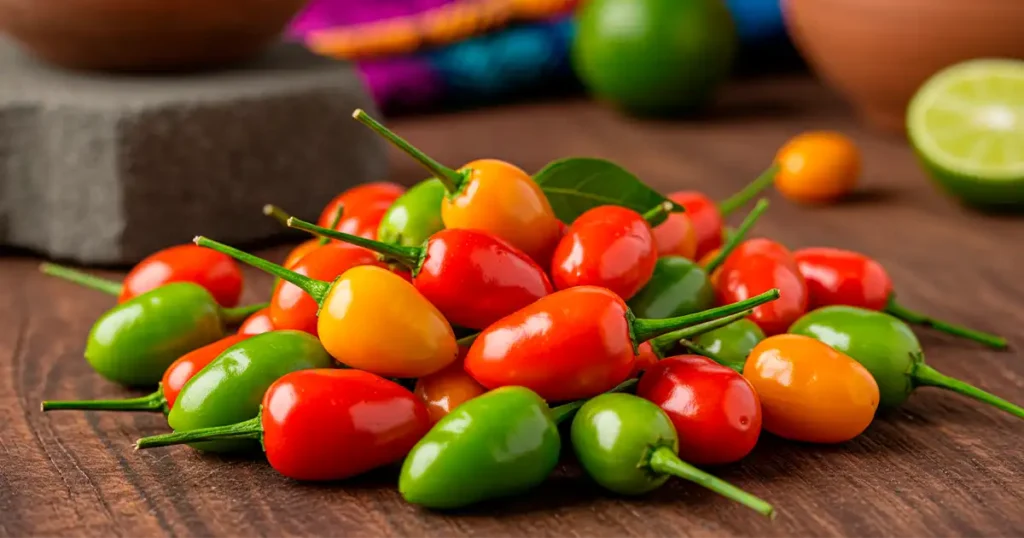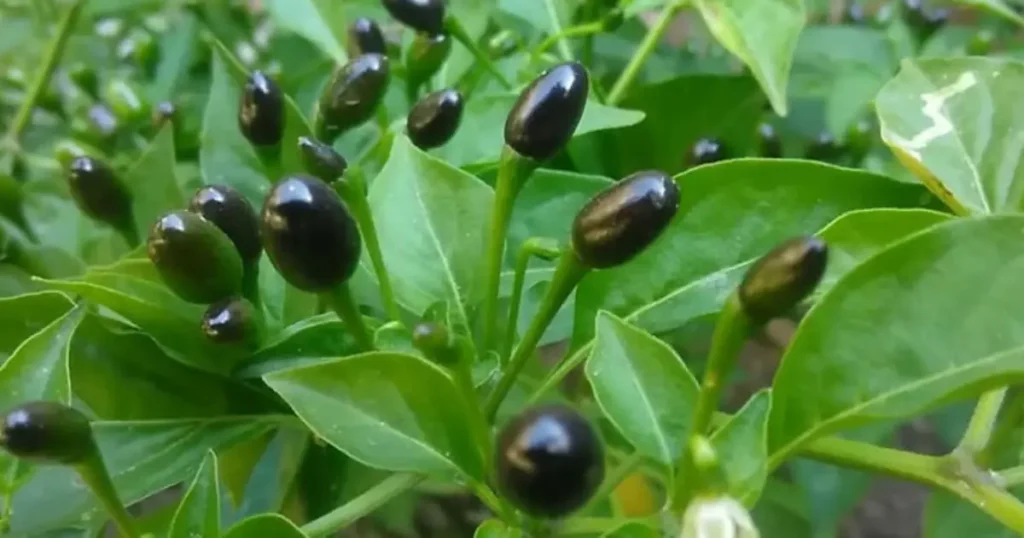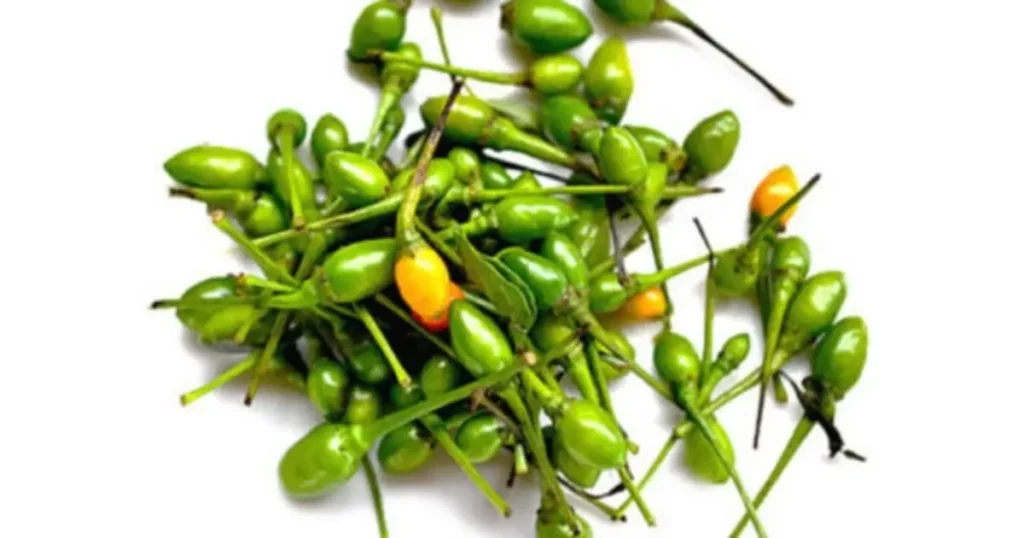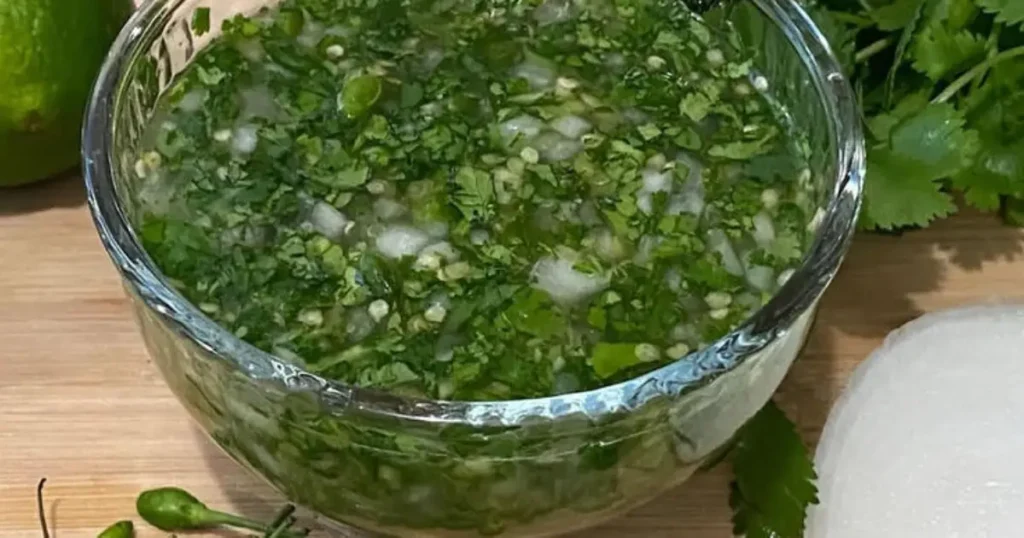Chile Chiltepe: The Tiny Fireball Fueling Guatemala's Culinary Soul

In the vibrant tapestry of Guatemalan cuisine, a tiny yet formidable chili pepper reigns supreme, infusing dishes with a characteristic zest and a fiery spirit that is deeply woven into the nation's cultural fabric. This is the Chile Chiltepe (Capsicum annuum var. glabriusculum), a diminutive powerhouse known affectionately in Guatemala as "el rey del picante" – the king of spice. Far more than just a source of heat, the Chiltepe is a culinary heritage, a symbol of local flavor, and a testament to the rich biodiversity of Mesoamerica.
Its appeal lies not only in its intense, rapidly blossoming heat but also in its unique, slightly fruity and peppery flavor that enhances everything from everyday meals to celebratory feasts. This article delves into the world of the Chile Chiltepe, exploring its origins, its fiery personality, its indispensable role in Guatemalan kitchens, its cultural significance, and how this mighty little pepper continues to captivate palates both within Guatemala and beyond.

Unveiling the Mighty Chiltepe: A Guatemalan Gem
The Chile Chiltepe, despite its small stature, holds a significant place in the botanical and culinary landscape of Guatemala. Understanding its background, appearance, and natural habitat reveals why this pepper is so cherished.
Botanical Background and Origins
Scientifically classified as Capsicum annuum var. glabriusculum, the Chile Chiltepe is a wild variety of chili pepper native to the Americas, with a strong presence throughout Mesoamerica. Its name "Chiltepe" is believed to be a Castellanized adaptation of the Nahuatl term "chil-tecpin," which translates to "flea chili." This evocative name aptly describes its minute size, yet belies its potent impact. For millennia, long before the arrival of Europeans, indigenous populations, including the Maya, recognized the value of wild chilies like the Chiltepe, incorporating them into their diets, agricultural practices, and even medicinal traditions. It is considered one of the ancestral forms of many cultivated chili peppers known today.
Appearance and Characteristics
The Chiltepe pepper is easily recognizable by its distinct appearance. The fruits are typically very small, often round or slightly oval, measuring around 0.5 to 1 centimeter in diameter – roughly the size of a pea. When immature, they are a vibrant green, gradually transitioning to a brilliant red or an alluring orange-red as they ripen. Some regional variations might exhibit slight differences in shape or exact shade, but the quintessential Chiltepe is this tiny, jewel-like orb. The plant itself is a bushy shrub that can vary in size, sometimes remaining compact and other times growing several feet tall, especially in the wild under favorable conditions. Its leaves are green and ovate, and it produces small, white flowers that eventually give way to the prized chili pods.
The Wild Heart: Chiltepe in its Natural Habitat

Chile Chiltepe is a resilient plant that thrives in warm, humid climates, characteristic of many regions in Guatemala. It grows both wild and cultivated. In the wild, it's often found in diverse environments, from lowland forests to mountainous areas, frequently under the partial shade of larger "nurse plants" like hackberry or mesquite trees. These companion plants offer protection from the harshest sun and create a microclimate conducive to the Chiltepe's growth. This wild nature contributes to its robust flavor and heat. While wild harvesting continues, particularly in rural communities, Chiltepe is also cultivated by small farmers and in home gardens across Guatemala, ensuring a steady supply for local markets and kitchens. It's particularly prevalent in departments like Petén, Alta Verapaz, and along the coastal plains.
The Scoville Sizzle: Understanding Chiltepe's Fiery Kick
The defining characteristic of the Chile Chiltepe for many is its pronounced spiciness. This heat is not just a sensation but a complex interplay of chemical compounds that can be measured and appreciated for its nuances.
Measuring the Heat: Chiltepe on the Scoville Scale
The intensity of a chili pepper is quantified using the Scoville Heat Unit (SHU) scale, developed by American pharmacist Wilbur Scoville in 1912. The Chile Chiltepe registers impressively on this scale, typically ranging from 50,000 to 100,000 SHU. This places it firmly in the medium-hot to hot category. The heat is primarily due to the presence of capsaicinoids, with capsaicin being the most abundant. The exact Scoville rating can vary depending on factors such as the specific cultivar, soil conditions, climate, and ripeness at harvest.
Comparing the Spice: How Chiltepe Stacks Up

To put its heat into perspective, a standard jalapeño pepper scores between 2,500 and 8,000 SHU. This means the Chiltepe can be anywhere from 6 to 40 times hotter than a jalapeño. Its heat level is comparable to that of a Cayenne pepper, a Tabasco pepper, or some varieties of Thai chilies. While not reaching the scorching heights of superhots like the Habanero (100,000–350,000+ SHU) or the Ghost Pepper (over 1,000,000 SHU), the Chiltepe delivers a potent, sharp, and often immediate kick that is highly prized by spice enthusiasts. Many describe its heat as bright and quick, igniting the palate rapidly but often subsiding without the prolonged burn of some other chilies.
Beyond the Burn: The Flavor Profile of Chiltepe
While its spiciness is a dominant trait, the Chile Chiltepe is not a one-note wonder. Beneath the initial fire lies a distinct and complex flavor profile. It often carries slightly fruity undertones, especially when fresh, and a pronounced peppery taste that is both earthy and bright. Some describe a subtle smokiness, particularly when the peppers are allowed to dry. This unique flavor, combined with its significant heat, makes it a versatile ingredient capable of adding depth and character to a wide array of dishes, rather than just overwhelming them with pungency.
A Cornerstone of Chapín Cuisine: Chiltepe in the Guatemalan Kitchen
In Guatemala, the Chile Chiltepe is more than an ingredient; it's an institution. Its presence is felt across the culinary spectrum, from humble home cooking to the offerings at local "comedores" (eateries) and even upscale restaurants celebrating traditional flavors. "Chapín" is a colloquial term for Guatemalan, and Chiltepe is undeniably a cornerstone of "sabor Chapín" (Guatemalan flavor).
The Soul of Salsas and Sauces

Perhaps the most ubiquitous use of Chiltepe is in salsas. Guatemalan tables often feature a small bowl of freshly made Chiltepe salsa, allowing diners to customize the heat of their meal. These salsas can be remarkably simple: freshly crushed or finely chopped Chiltepes mixed with lime juice, a bit of onion, cilantro, and salt. Another popular preparation involves lightly toasting the chilies before mashing them to deepen their flavor. Beyond these fresh salsas, Chiltepes are a key ingredient in some "recados" – the complex, richly spiced sauces that form the base of many traditional Guatemalan stews and dishes. While not all recados are spicy, those that are often derive their kick from the Chiltepe or its cousin, the Chile Cobanero.
Pickled Perfection: Chiltepes en Vinagre
Pickling is a beloved method of preserving Chiltepes and mellowing their intense heat while infusing them with a tangy zest. "Chiltepes en vinagre" are a common condiment. These are typically made by submerging whole or lightly crushed Chiltepes in vinegar, often along with slices of carrot, onion, garlic, oregano, and other spices. The resulting pickle is a vibrant, flavorful addition to sandwiches, meats, salads, and even snacks like "chicharrones" (pork cracklings). The pickling liquid itself becomes a spicy, aromatic infusion that can be drizzled over food.
From Everyday Meals to Festive Feasts

The versatility of Chiltepe means it finds its way into a vast array of Guatemalan dishes. It’s commonly offered as an accompaniment to hearty soups like "Caldo de Res" (beef soup) or "Kak'ik" (a spicy turkey soup of Mayan origin, though Kak'ik more traditionally features Chile Cobanero, Chiltepe can be a fiery alternative or addition in some households). Diners can add crushed or whole Chiltepes to their liking. It's also used to spice up "churrascos" (grilled meats), "ceviches," egg dishes for breakfast, and bean preparations. Essentially, any dish that could benefit from a touch of fire is a candidate for Chiltepe.
Fresh, Dried, or Powdered: Versatility in Form
The Chiltepe is utilized in various forms, each offering a slightly different nuance.
- Fresh: Green or red Chiltepes are used for their bright, immediate heat and fruity notes in fresh salsas and as a direct condiment.
- Dried: Ripe red Chiltepes are often sun-dried, which concentrates their flavor and heat, sometimes adding a subtle smoky quality. Dried Chiltepes can be stored for long periods and are commonly crushed into flakes or ground into a powder to be sprinkled over food or incorporated into spice blends.
- Powdered: Ground dried Chiltepe provides a convenient way to add consistent heat and flavor to dishes. It's a staple in many Guatemalan spice cabinets.
More Than Just Spice: The Cultural Tapestry of Chile Chiltepe
The Chile Chiltepe's significance in Guatemala extends far beyond its culinary applications. It is interwoven with the country's history, traditions, and identity.
Echoes of the Maya: Ancient Roots and Traditional Wisdom
Chili peppers, including wild varieties like Chiltepe, have been an integral part of Mesoamerican diets for thousands of years. The ancient Maya, who inhabited much of present-day Guatemala, cultivated and consumed chilies extensively. Chiltepe, growing wild in the region, would have been a readily available source of spice and nutrition. It was part of the ancestral "milpa" system – a traditional intercropping system. Beyond food, chilies held a place in Mayan cosmology and traditional medicine. Some historical accounts and ongoing indigenous practices suggest that Maya spiritual guides, known as Ajq'ijab, recommended consuming chili to prevent illnesses believed to be caused by disharmony or to ward off negative energies. The Chiltepe, in this context, is a living link to this ancient agricultural and spiritual heritage.
"El Rey del Picante": Chiltepe's Reign in Guatemalan Gastronomy
The title "el rey del picante guatemalteco" is not bestowed lightly. It reflects the deep respect and affection Guatemalans have for this particular chili. It is often the first chili that comes to mind when discussing national cuisine and is a source of local pride. Its ability to transform a simple dish into something vibrant and exciting makes it a cherished ingredient. For many Guatemalans, the taste of Chiltepe is intrinsically linked to home, family gatherings, and the authentic flavors of their land.
A Social Spice: Chiltepe in Markets and Home Gardens
The Chiltepe is a common sight in Guatemalan "mercados" (markets). Piles of the tiny, vibrant peppers – fresh green, ripe red, or dried – are sold by vendors, often alongside homemade Chiltepe salsas and pickles. The exchange around Chiltepes in the market is a part of daily life. Furthermore, many Guatemalan families cultivate Chiltepe plants in their home gardens or patios. Having a personal supply of this essential spice is a matter of convenience and tradition, ensuring that the fiery heart of Guatemalan cuisine is always within reach.
From Seed to Sensation: Cultivating and Harvesting Chiltepe
The journey of the Chile Chiltepe from a tiny seed to a flavor-packed pepper is a fascinating one, reflecting its wild origins and its adaptation to cultivation.
The Journey of the "Bird Pepper"
Chiltepe is often referred to as "bird pepper" or "chile de pájaro" because wild birds play a crucial role in its propagation. Birds are attracted to the brightly colored ripe peppers and consume them. The seeds pass through their digestive tracts unharmed. In fact, this process, known as scarification, can aid germination by weakening the tough seed coat. Birds then deposit the seeds in new locations, often under trees where they perch, explaining why Chiltepe plants are frequently found growing in the wild beneath larger "nurse plants." This natural dispersal method is key to its widespread presence. However, germination can be notoriously slow and erratic, even for human cultivators, sometimes taking several weeks or even months for sprouts to appear.
Tips for the Aspiring Chiltepe Grower
For those wishing to cultivate Chiltepes, patience is key. Here are some general tips:
- Starting Seeds: Seeds can be started indoors. Soaking them or gently scarifying them (e.g., lightly rubbing with sandpaper) might improve germination rates. Plant them about ¼ inch deep in well-draining soil. Keep the soil consistently moist but not waterlogged, and provide warmth.
- Light: In hotter, desert-like climates, Chiltepes benefit from filtered sunlight or partial shade, mimicking their natural understory habitat. In cooler, more temperate climates like parts of highland Guatemala, they can tolerate more direct sun.
- Soil and Water: Well-drained soil is essential. They are relatively drought-tolerant once established but will produce better with regular watering, especially during dry periods.
- Perennial Nature: Chiltepe plants are perennials in frost-free climates. If the roots do not freeze, they can live and produce fruit for many years, sometimes growing into substantial shrubs. In areas with frost, they can be grown as annuals or in containers that can be moved indoors during winter.
Reaping the Fiery Rewards: Harvesting and Drying
Chiltepes are typically ready for harvest in the late summer and early fall. The peppers can be picked green for a brighter, sharper heat, or allowed to fully ripen to red for a sweeter, more rounded (though still intense) spiciness. For drying, red ripe peppers are usually preferred. They can be sun-dried, laid out on trays in a well-ventilated area, or strung into "ristras" (strings). Proper drying is crucial for long-term storage and to prevent mold. Once completely dry, they become brittle and their color deepens.
The Goodness Within: Health Benefits of Chile Chiltepe
Beyond its fiery flavor, the Chile Chiltepe packs a surprising nutritional punch and offers several potential health benefits, many of which are linked to its high capsaicin content and rich array of vitamins.
A Powerhouse of Vitamins and Antioxidants
Chile Chiltepe is a notable source of essential vitamins. It is particularly rich in Vitamin C, a potent antioxidant that supports immune function and collagen production. It also contains significant amounts of Vitamin A (often in the form of carotenoids, which give the red peppers their color), crucial for vision, skin health, and immune response, as well as Vitamin E, another important antioxidant. The antioxidants found in Chiltepes help combat oxidative stress in the body, potentially reducing the risk of chronic diseases and slowing cellular aging.
Taming Inflammation and Boosting Immunity
Capsaicin, the active compound responsible for the chili's heat, has well-documented anti-inflammatory properties. Consuming Chiltepes may help reduce inflammation in the body, which is implicated in various health issues. Furthermore, the combination of vitamins and antioxidants contributes to a stronger immune system, helping the body defend against infections like common colds and flu. Traditional uses often allude to these protective qualities.
Metabolic Marvel: Aiding Digestion and Circulation
Capsaicin is also known to stimulate metabolism, potentially increasing calorie burning and aiding in weight management. It can also promote healthy digestion by stimulating the secretion of digestive enzymes. Some studies suggest that capsaicin can improve blood circulation and may have benefits for cardiovascular health, such as helping to reduce cholesterol levels. The warming sensation it produces can also be invigorating and is even said by some to lift mood.
Finding Your Fire: Sourcing and Storing Chile Chiltepe
For those eager to experience the unique zest of Chile Chiltepe, knowing where to find it and how to store it is essential to enjoying its peak flavor and potency.
Navigating Guatemalan Mercados: Buying Fresh Chiltepes
In Guatemala, local markets ("mercados") are the primary place to find fresh Chiltepes. Look for vendors selling fresh produce; you'll often see small piles of green or red Chiltepes, sold by the "manojo" (bunch), by weight, or in small measures. Don't hesitate to ask vendors about their chilies; they can often tell you about the heat level and freshness. Larger markets like La Terminal in Guatemala City will almost certainly have them, as will smaller regional markets throughout the country. You may also find homemade Chiltepe salsas and pickles sold by market vendors.
Beyond Borders: Finding Chiltepe Products Online
Outside of Guatemala and Mesoamerica, fresh Chiltepes can be challenging to find. However, dried Chiltepes (whole or crushed), Chiltepe powder, and bottled Chiltepe hot sauces are often available from specialty Latin American food stores or online retailers that import Guatemalan products. When buying online, look for reputable sellers who can provide information about the origin and quality of their Chiltepes. Some seed companies also sell Chiltepe seeds for those who want to try growing their own.
Keeping the Heat: Proper Storage for Fresh and Dried Chiltepes
Proper storage is key to maintaining the quality of your Chiltepes:
- Fresh Chiltepes: Store fresh Chiltepes in the refrigerator, unwashed, in a breathable bag or container. They should last for one to two weeks. For longer storage, fresh Chiltepes can be frozen whole or chopped. They can also be pickled.
- Dried Chiltepes: Dried Chiltepes should be stored in an airtight container in a cool, dark, and dry place. Kept this way, they can retain their potency for many months, even up to a year or more. Avoid exposure to light, heat, and moisture, which can degrade their flavor and color.
- Chiltepe Powder: Store Chiltepe powder similarly to dried chilies, in an airtight container away from light and moisture, to prevent caking and loss of flavor.
Conclusion: The Enduring Allure of Guatemala's Fiery Jewel
The Chile Chiltepe is far more than just a source of intense heat; it is a vibrant thread in the rich cultural and culinary tapestry of Guatemala. From its wild origins and ancient Mayan connections to its omnipresence in modern Chapín kitchens, this tiny pepper commands a respect and affection disproportionate to its size. Its ability to transform dishes with a burst of fiery flavor, coupled with its subtle fruity and peppery notes, makes it an indispensable ingredient. Whether enjoyed fresh in a zesty salsa, pickled as a tangy condiment, or dried and crushed to add a spark to countless recipes, the Chiltepe embodies the spirited and flavorful essence of Guatemalan gastronomy. As more people around the world discover its unique charm, the legend of "el rey del picante" continues to grow, inviting everyone to experience a taste of Guatemala's fiery soul.

Leave a Reply